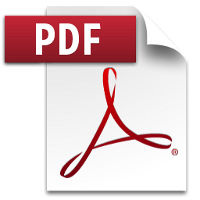 Administration of Estates Act, 1965
Administration of Estates Act, 1965
R 385
Mine Health and Safety Act, 1996 (Act No. 29 of 1996)Guideline for a Mandatory Code of PracticeRoad and Rail Safety Management in the South African Mining IndustryPart A: The Guideline5. Definitions and acronyms |
| 5.1. | For purposes of this guideline, unless the context otherwise indicates, the definitions and acronyms are as follows: |
| 5.1.1. | CIOM means Chief Inspector of Mines. |
| 5.1.2. | COP(s) means Code(s) of Practice. |
| 5.1.3. | DMPR means Department of Mineral and Petroleum Resources. |
| 5.1.4. | Integrity means a condition where the individual components of a system and the total system are unified, consistent and fit for purpose. |
| 5.1.5. | Level crossing(s) means the place approved by the network operator and the road authority (or the landowner in the case of a private road) where a road crosses the railway line(s). |
| 5.1.6. | Level crossing protection means the range of appropriate, technology, road signs, road markings and road signals that are used in various combinations according to the relative level of risk at a level crossing to afford the appropriate minimum level of protection at the level crossing. |
| 5.1.7. | MHSA means the Mine Health and Safety Act, 1996 (Act 29 of 1996) as amended. |
| 5.1.8. | Modes of transport means various methods or ways for moving of people or |
| 5.1.9. | MOSAC means the Mine Occupational Safety Advisory Committee. |
| 5.1.10. | Network means a system of railway infrastructure elements comprising of track, civil infrastructure, train control and signalling systems, and where applicable, electric traction infrastructure which constitutes of running lines, railway sidings and private sidings, stations, depots, marshalling yards, railway yards, etc. (SABS, 2021). |
| 5.1.11. | Network operator means the person(s) who have the ultimate accountability for one or both of the following: |
| (a) | The safety of a network or part thereof including the design, construction, maintenance and integrity of the network. |
| (b) | Ensuring compliance of rolling stock with the applicable standards of the network. |
| (c) | The authorising and directing of the safe movement of rolling stock on the network. |
| 5.1.12. | NRTA means the National Road Traffic Act, 1996 (Act 93 of 1996). |
| 5.1.13. | OEM means the original equipment manufacturer. |
| 5.1.14. | Passenger transport vehicle means a vehicle which is owned by a mine or is contracted to a mine, that is used for the transportation of mine employees. |
| 5.1.15. | PrDP means Professional Driving Permit. |
| 5.1.16. | PPE means personal protective equipment. |
| 5.1.17. | Private road means a road, a street, a thoroughfare or any other place or any section thereof (whether a thoroughfare or not) that is not commonly used by the public or to which the public does not have right of access, and includes: |
| (a) | The verge of any such road, street or thoroughfare; |
| (b) | Any bridge, ferry or drift traversed by any such road, street or thoroughfare; and |
| (c) | Any other work or object forming part of, is connected with or belongs to such road, street or thoroughfare. |
| 5.1.18. | Private road owner means a person responsible for a private road and who has the right of access to that road. |
| 5.1.19. | PTV means a passenger transport vehicle. |
| 5.1.20. | Public road as described in the NRTA means any road, street or thoroughfare or any other place (whether a thoroughfare or not) which is commonly used by the public or any section thereof or to which the public or any section thereof has a right of access, and includes: |
| (a) | The verge of any such road, street or thoroughfare; |
| (b) | Any bridge, ferry or drift traversed by any such road, street or thoroughfare; and |
| (c) | Any other work or object forming part of or connected with or belonging to such road, street or thoroughfare. |
| 5.1.21. | Road authority means the relevant national or provincial road authority, municipal council or municipality (or both), excluding a private road owner, that has the relevant authority over the proclaimed national, provincial, urban or rural roads, including, but not limited to, the maintenance of the road surface, drainage, road markings, signage, control of vegetation and law enforcement (SABS, 2021). |
| 5.1.22. | RSR means the Railway Safety Regulator. |
| 5.1.23. | RTMC means the Road Traffic Management Corporation. |
| 5.1.24. | Station operator means a person responsible for the control and the management of a station. |
| 5.1.25. | Train operator means a person who is responsible and accountable for the following: |
| (a) | Safe movement of rolling stock on a network. |
| (b) | Safety and integrity of rolling stock. |
| (c) | Safety of freight or persons being conveyed. |